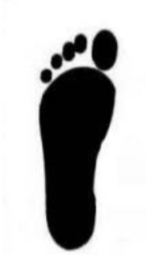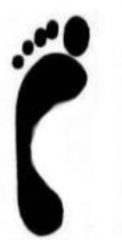Gait and musculoskeletal abnormalities
1/30
There's no tags or description
Looks like no tags are added yet.
Name | Mastery | Learn | Test | Matching | Spaced |
|---|
No study sessions yet.
31 Terms
What musculoskeletal abnormality results in the knees being angled towards one another?
Genu valgum
What musculoskeletal abnormality results in the knees being angled outwards away from one another.
Genu varum
What musculoskeletal abnormality results in the foot being rotated outwards away from midline?
Equinovalgus
What musculoskeletal abnormality results in the foot being rotated inward towards midline?
Equinovarus (clubfoot)
What gait deviation is due to bilateral gluteus medius weakness resulting in hip drop and exaggerated movement of the upper body?
Waddle gait
A protective gait pattern where the stance time is decreased to avoid weight bearing on the involved side due to pain.
Antalgic gait
A gait pattern characterized by staggering and unsteadiness.
Ataxic gait
What gait deviation is due to insufficient hip flexion, knee flexion or dorsi-flexion resulting in a circular motion of the leg during swing phase?
Circumduction gait
A gait pattern in which a patient abducts their paralyzed limb, swings it around, and brings it forward so the foot comes to the ground in front of them.
Hemiplegic gait
A gait pattern characterized by increased forward flexion of the trunk and knees, gait is shuffling with quick and small steps; festinating may occur.
Parkinsonian gait
A gait pattern with stiff movement, toes seeming to catch and drag, legs held together, and hip and knee joints slightly flexed.
Spastic gait
A gait pattern in which the feet and toes are lifted through hip flexion and knee flexion to excessive heights; usually secondary to dorsi-flexion weakness. The foot will slap at initial contact with the ground secondary to decreased control.
Steppage gait
Gait deviation characterized by the dropping of the pelvis on the side opposite to the weakened hip flexor.
Trendelenburg gait
A gait deviation were the swing leg advances by compensating through the combination of elevation of the pelvis and plantar flexion of the stance leg.
Vaulting gait
Musculoskeletal abnormality resulting in the head and neck being twisted to one side; often due to sternocleidomastoid shortening.
Torticollis
Musculoskeletal abnormality resulting in a flat spot on one side or typically the back side of the head.
Plagiocephaly
Musculoskeletal abnormality resulting in hyperextension of the knees.
Genu recurvatum
Gait abnormality characterized by excessive hip, knee and ankle flexion during the stance phase of gait; often seen in individuals with cerebral palsy, spastic diplegia and/or spina bifida.
Crouch gait
A musculoskeletal abnormality characterized by one leg presenting with genu valgus and the other as genu varus; can result in hip
Windswept deformity
Excessive movement between the atlas (C1) and the axis (C2); seen commonly in patients with down syndrome.
Atlantoaxial instability
What muscles are responsible for anterior pelvic tilt?
Trunk extensors and hip flexors
A congenital condition where fingers or toes are fused or webbed together
Syndactyly
What muscles are responsible for posterior pelvic tilt?
Trunk flexors and hip extensors
When doing a postural assessment of your patient, you note increased space bilaterally from the spine to the entire medial / vertebral border of the scapula. How would you best describe the scapulae position?
Protraction

Why is the foot shaped this way
Over pronation

Why is the foot shaped this way
Over supination
When monitoring skin condition on a patient with an amputation orthosis (prosthetic), what areas should be of most importance when checking skin condition?
Areas that bear weight and are closest to bone prominences.

2
What is the PRIMARY goal when treating a patient with osteogenesis imperfecta?
Promote safe handling and positioning
What parameter of gait would likely be increased with parkinsonian gait?
Cadence
step length
stride length
walking speed
3 bony landmarks used to measure Q-angle.
ASIS, midpoint of patella, tibial tubercule